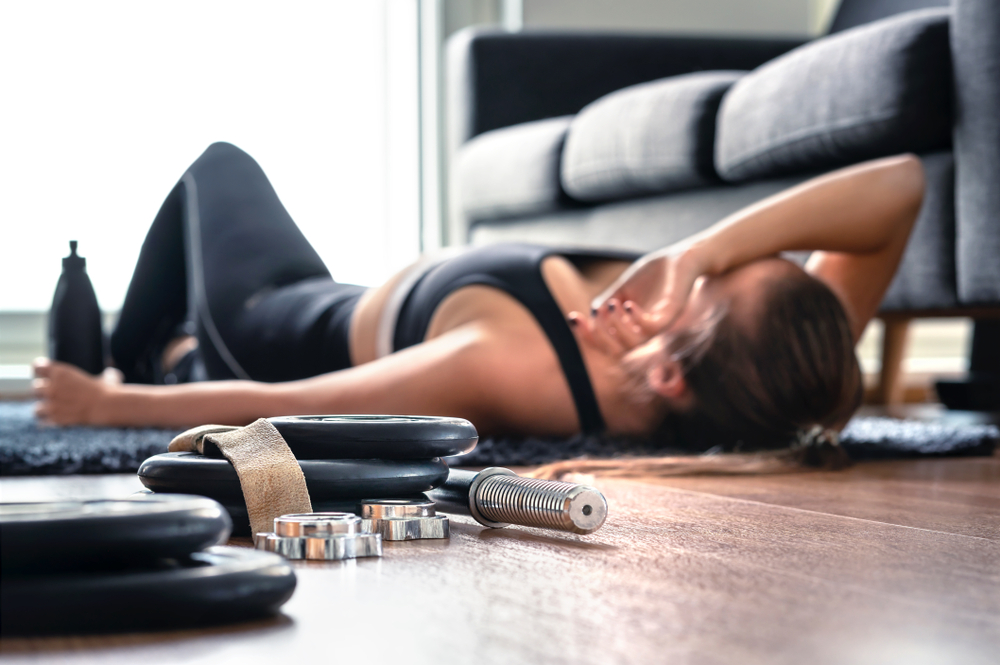Exercise may help reduce the frequency and intensity of migraine attacks. Here’s how to exercise safely if you have migraine.
If you have migraine, you may have heard conflicting opinions about whether exercise will make your symptoms worse.
Exercise can have a bad reputation in the migraine community that’s largely undeserved, says Dale Bond, PhD, a director of research at Hartford Hospital in Connecticut.
“Vigorous exercise might be a trigger in a small subset of people with migraine, but overall the benefits of physical activity far outweigh the risk for people with migraine,” Dr. Bond says.
Regular exercise is associated with a reduction in the frequency and intensity of migraines, says Jennifer Kriegler, MD, a neurologist and the former director of headache medicine at the Cleveland Clinic in Ohio.
A good rule of thumb: Don’t exercise if you’re in the middle of a migraine attack, as it can make the pain worse, Dr. Kriegler says. When you’re pain-free, on the other hand, exercising can help ward off attacks by relieving stress, a common migraine trigger.
Exercise also stimulates the release of feel-good hormones called endorphins and enkephalins, “our body’s natural painkillers and natural antidepressants,” respectively, according to Daniel V. Gaz, a certified exercise physiologist and director of practice engagement at the Mayo Clinic in Rochester, Minnesota.
“If you have avoided exercise because [you worry about triggering] migraines, it’s possible that you’re missing out on an overwhelmingly large number of benefits,” says Gaz.
Want to add exercise to your daily routine? Here’s how to do it safely when you have migraine.
1. Choose an Activity You Like
Whether you choose brisk walking, jogging, swimming, or cycling, you’re more likely to stick to your routine if you enjoy the activity. Start with low-impact exercises that won’t jostle your body too much, says Gaz.
2. Build Your Stamina Gradually
“In terms of aerobic exercise, we would generally tell our patients to start with walking — it’s easy, it’s safe, it’s cheap, and it’s practical — and to do that regularly,” says Bond.
As you get more comfortable with your exercise routine, you can gradually work up to higher-intensity exercise. Exercises like jumping jacks, hopping in place, running stairs, and doing box jumps can strengthen your muscles, bones, joints, and ligaments, Gaz says.
If you’re just starting out, limit your high-impact exercise to one day a week, he says. “As you become more comfortable and used to these types of movements and activities, feel free to add another day of high-impact exercise to your program.”
Your goal should be to move more and sit less. Aim to do 150 to 300 minutes of moderate-intensity aerobic exercise and two or more days of strength training a week, the amount recommended by the Centers for Disease Control and Prevention. The latest guidelines state that every little bit helps — a quick walk up and down the office hallway, a jog around the block, or a climb up the stairs can count toward your weekly goal.
3. Snack Smart to Keep Blood Sugar in a Healthy Range
Because your blood sugar decreases during exercise, it’s important to have a source of energy while you work out, Gaz says.
The American Migraine Foundation (AMF) recommends eating about 90 minutes before you exercise and suggests eating foods with protein, such as protein bars and nuts, prior to exercise.
If you get cramps, you may have eaten too close to your workout, Gaz notes. And, adds Kriegler, going too long without eating can also provoke migraine.
4. Stay Hydrated Before, During, and After a Workout
People who get migraine attacks regularly can experience an episode if they’re dehydrated — especially while they’re exercising, Gaz says. “It takes roughly 64 to 80 ounces of fluid to replace the water we lose in our bodies over the course of 24 hours,” he says, noting that even more fluid is needed if you regularly exercise and live in a warmer climate.
In one study, researchers found that people with migraine who drank more water had less-intense headaches.
5. Warm Up and Cool Down
Jumping right into your routine without warming up first could trigger migraine, Gaz says. Instead, try taking a five-minute walk before you start running, jogging, or cycling. If you’re doing resistance training, try warming up with some light weights first, Gaz says.
After your workout, take a five-minute walk or do gentle stretches to help lower your heart rate and blood pressure. “This also can help eliminate some of the post-exercise muscle soreness that comes with resistance training,” he says.
6. Keep Cool During Exercise
“If you’re overheated, it can trigger a migraine,” Kriegler says. Heat, humidity, bright artificial lights in the exercise studio, and bright sunlight can all make migraine more likely, according to the AMF.
“Particularly on hot days, try exercising in the early morning to avoid that heat and humidity,” suggests Bond.
7. Use Correct Posture When Exercising
Using the wrong form while you exercise can place extra stress on your head, neck, and shoulders, which can trigger migraine, Kriegler says. An exercise specialist can help correct your form, Gaz says. You can also get tips from online exercise videos.
8. Try Exercise or Physical Activity That Isn’t Aerobic
Although there are benefits to more vigorous exercise, exploring nonaerobic exercise can also be beneficial to people with migraine, says Bond.
“For example, hatha yoga might be particularly efficacious for someone with migraine because it actually works on some of the mechanisms we see, such as neck pain and stiffness, anxiety, catastrophizing about pain, and stress reduction,” he says.
9. Talk to Your Doctor About Migraine Medication
Ask your doctor about the timing of your medications and whether it’s okay to take them before you work out; certain medications used to treat migraine can affect your heart rate, blood pressure, and muscle activity, Gaz says. This is especially a risk if you use beta blockers or calcium channel blockers.









